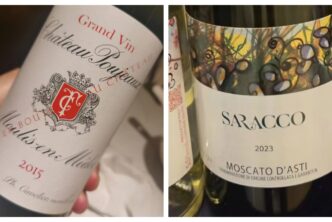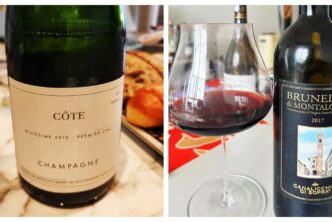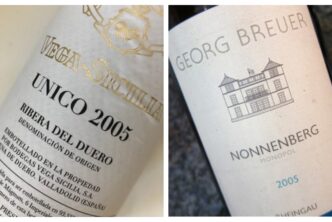Theo Minges 2020 Riesling Halbtrocken Pfalz 91
Theo Minges 2015 Riesling Beerenauslese Pfalz 91
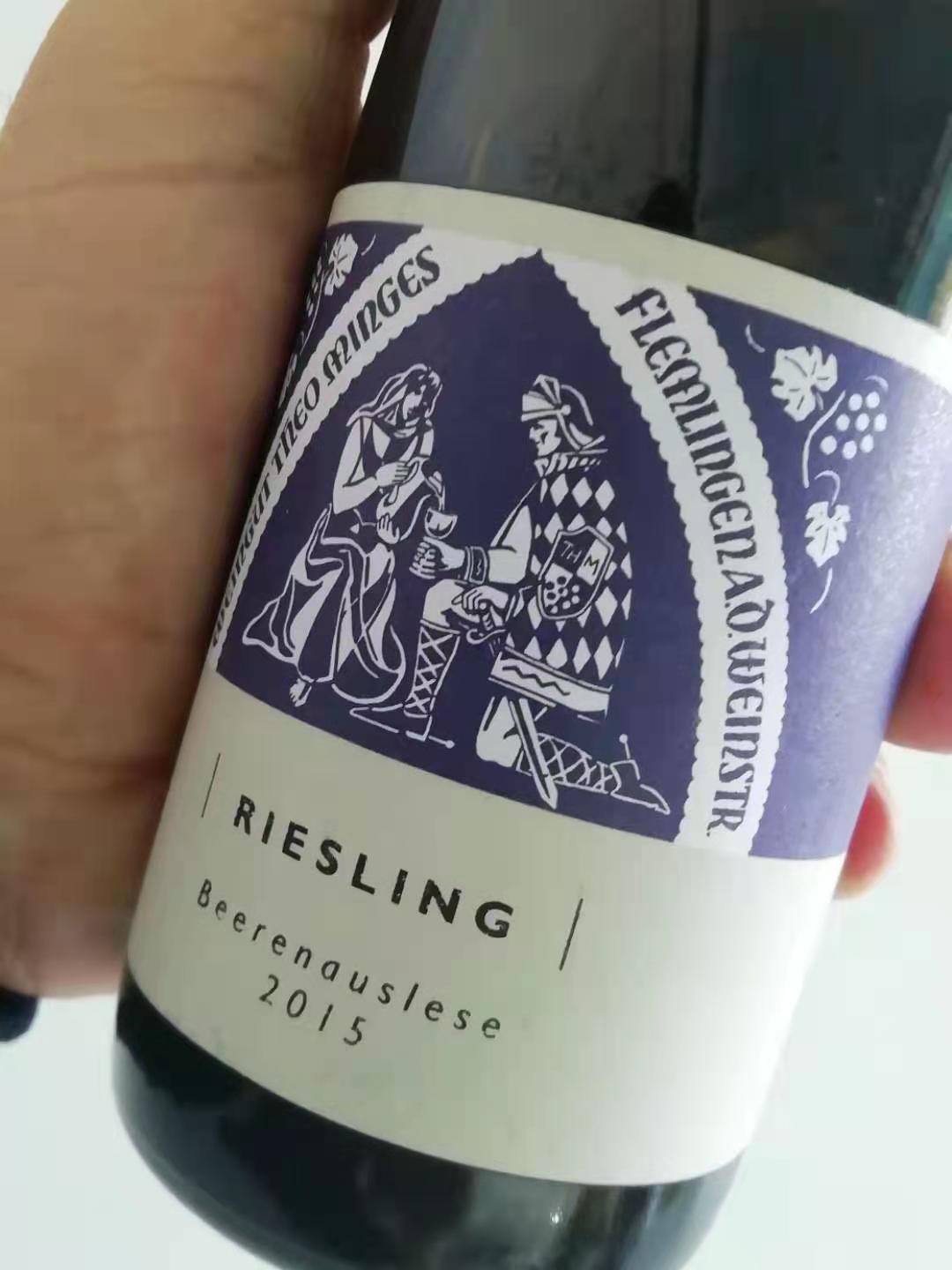
I love the Rieslings from the Saar, Mosel and Ruwer, but those (totally different ones) of the Pfalz just as much. Theo Minges is one estate that I never pass on trying the wines of, a bevy of super-interesting and very fine wines made from the likes of Gelber Muskateller, Weissburgunder, Gewürztraminer, Scheurebe and yes, of course, Riesling. And though Minges may be a relatively “newer” name to the ears of wine-lovers who may have grown up hearing about and tasting the wines of the Big 3 “B”s from the Pfalz (Bassermann-Jordan, Burklin-Wolf and von Buhl), the wines are topnotch and deserve your attention (and money). In fact, the Theo Minges estate is not new at all: it is now in its sixth generation, and has been around since the sixteenth century. And it is thanks to this family, along with other producers such as for example Messmer, Rebholz, Volker Gies, and Wehrheim, that the southernmost wine section of the Pfalz, also referred to as the Südliche Weinstrasse, has catapulted into the same attention span of the Mittelhaardt.
I recently tasted two beauties from the Theo Minges estate. The two that stuck out the most, for a variety of different reasons, were the two at the opposite ends of the prestige and price spectrum; and as things often work out in life, it was the David rather than the Goliath that I will remember most, and buy again. The Theo Minges 2020 Riesling Halbtrocken Pfalz (that comes in a generous liter bottling) is just a lovely wine that reflects what great German and Pfalz Riesling wines are all about. The enticing aromas and flavours of white peach, green apple, lemon zest and jasmine are a textbook representation of what one expects from what are some of the world’s most unique and exciting wines. And far from turning people off with a modicum amount of residual sugar, that actually adds further depth and dimension to what is already a lovely wine, this beauty will prove absolutely smashing with an array of different foods ranging from ethnic to Americana. Make sure you don’t miss out on Germany’s 2020 wines, for it’s a lovely vintage for the country. Drinking window: now-2024.
The Theo Minges 2015 Riesling Beerenauslese is lusciously rich and smooth and is everything you’d expect from a sweet wine at this level of noble rot and concentration stardom (it is a BA– Beerenauslese, after all) except maybe for a little lift. Orange peel and muskmelon nuances abound, along with a brown sugar and caramel overlay, and that linger long on the very sweet, ripe, sultry aftertaste. The 2015 vintage was an especially hot one in this part of the Pfalz, and despite this wine’s obvious acidity you can still tell it is the product of a hot year (summer temperatures reaching as high as 40.2 degrees Celsius at one point). Happily (and not unlike what happened in Italy in 2012, for example) the heat hit right from the start of the growing season giving the vines time to adapt from the beginning of the season. Then, September rains allowed the grapes of those producers who didn’t panic and pulled the trigger too quickly to weather the storm (literally) thereby concentrating the juice and making for wines of noteworthy sweetness, extract and decent acidity. The only thing lacking here is a little complexity, a common finding in wines from hot years, when aromas and flavours are ample and immensely likeable in their showiness, but not necessarily deep and layered. Wait a minute, I stand corrected: there is something else missing from this wine, and it’s a serious, in my view even grave omission. Nowhere on the label is there to be seen the vineyard name from were these grapes were (supposedly) sourced: the Gleisweiler Hölle (a beautiful site characterized by red sandstone and limestone subsoil). I have no idea why that is, but it is something I hope not to see again: I understand that there is a general belief (and totally misguided, in my opinion) that German wine labels are too “complicated” (come on now folks, wine lovers are not idiots) but there are far too many “innovations” in modern German wines that are just plain wrong (the extended lees contact at all costs to the point that drinking some Rieslings is now akin to munching on grass; the ever-soooo hip and ever-soooo cool making of drier and drier wines such that many German Rieslings are now unfailingly showing an underlying bitterness; the thinking that sweet wines don’t express a sense of site…) and so I hope that this fine estate does not fall into that trap. If this BA wine was made with grapes coming wholly from the Hölle site, then it should say so on the label. Always. And I hope to have been (very) clear on this subject. Drinking window: now-2025.
Masi 1988 Amarone della Valpolicella Campolongo di Torbe 95
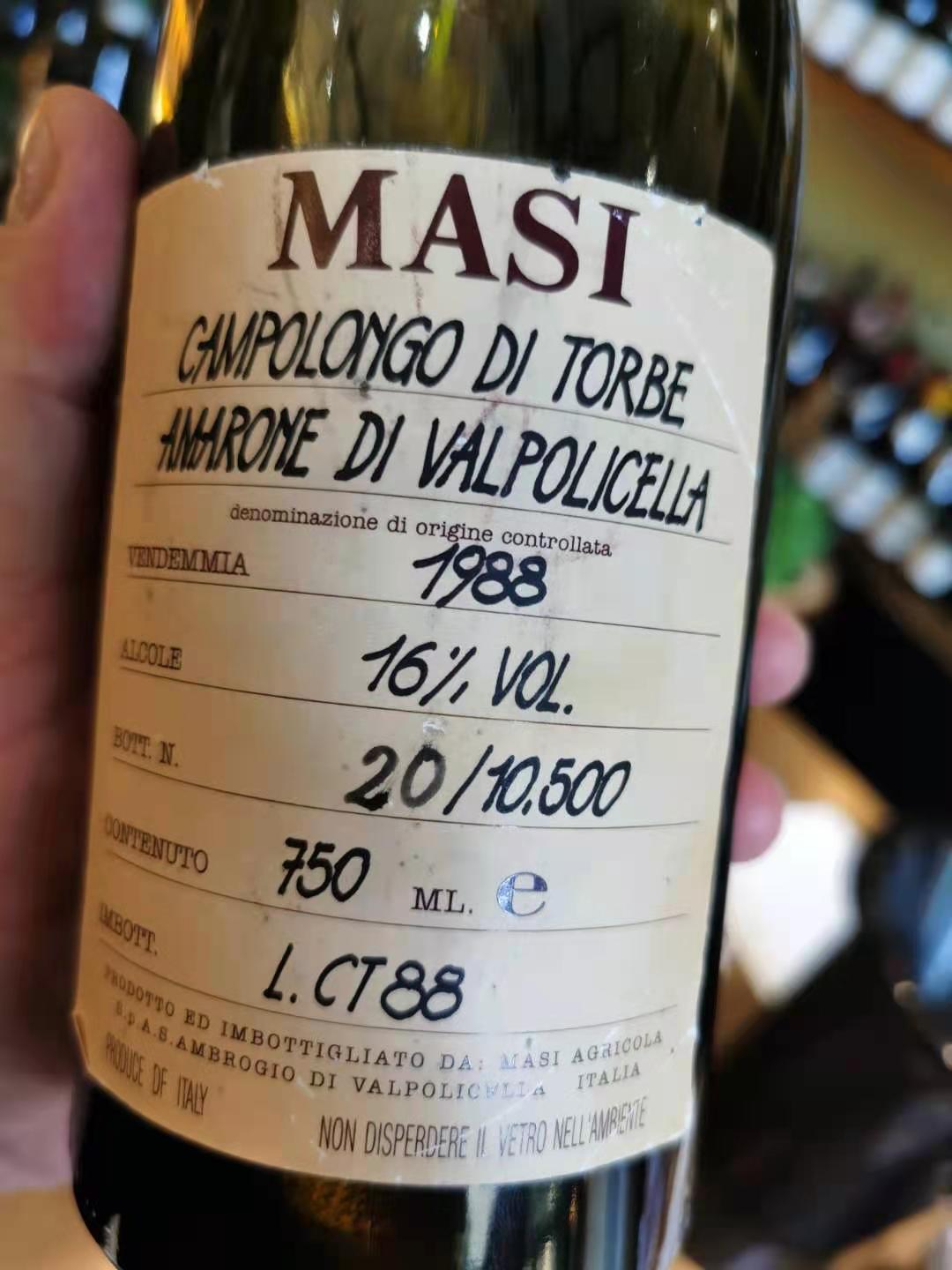
While the contributions of Quintarelli and Dal Forno to Amarone must never be forgotten and always acknowledged, it is doubtless that no other producer has done more to explain and bring Amarone to the world than Sandro Boscaini of Masi, Mr. Amarone himself. The list of “firsts” the Masi estate can boast is impressive, but it is the greatness of its Amarone crus that is unmissable. Campolongo di Torbe is one of the greatest sites from which to make Amarone: differently from the much drier microclimate of the Mazzano cru (Masi’s other famous and ultra-expensive cru Amarone), the Campolongo di Torbe’s slightly more humid environment allows for the development of noble rot and this shows to full effect in the wines made there, all of which showcase admirably well the “illusion of sweetness” that Boscaini has so well described in years past.
The Masi 1988 Amarone della Valpolicella Campolongo di Torbe is an absolutely benchmark wine that is aging gracefully now into its fourth decade of existence: it is a wine I know remarkably well having had it at least fifteen or sixteen times over the years, following its development closely right from the day of its release. Now redolent with tertiary (even quaternary, if that were possible) aromas and flavours of woodsy underbrush, faded flowers and orange peel, with a strong overlay of quinine (indeed, this is not unlike sipping on an exceptionally smooth and refined Amaro or Chinato), its ultra-suave persistence is something to marvel at. A year of less showy and opulent Amarones, even a year of “strict” wines (if Amarone can ever be described as such), the best from 1988 nonetheless convey the greatness of a properly made wine from air-dried grapes and this beauty from Masi is a case in point. This one also reflects the Valpolicella Classico’s magical terroir remarkably well. Sandro Boscaini is truly one of the better individuals in Italian wine, not to mention the nicest and most intelligent, and spending any amount of time with him is like opening an encyclopedia of knowledge that will leave you a memory and a learning opportunity like practically no other in Italian wine. I strongly recommend a visit to Masi anytime, and should Sandro is around and have time to talk, make sure you don’t pass up on it: you will never spend a better, more useful, more interesting couple of hours with anyone in Italian wine. Drinking window: now-2030 (in a good cellar only).

 中文
中文
